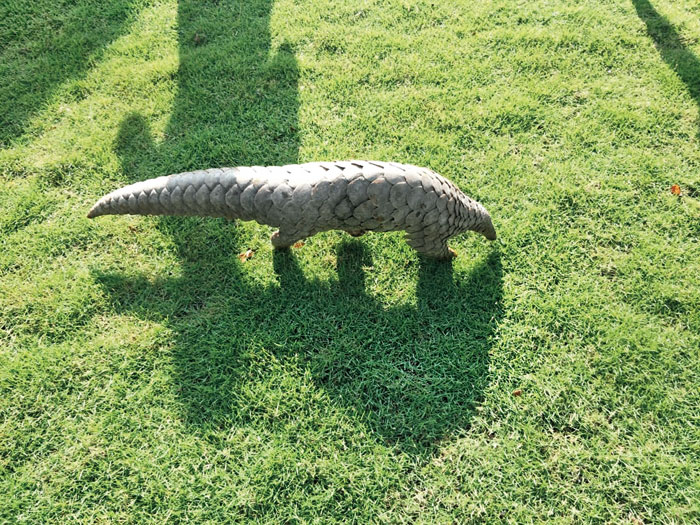Recent sightings of pangolins suggest that the endangered scaly anteaters, the most trafficked animals in the world, are back at Dalma wildlife sanctuary after a gap of more than four years.
An adult male pangolin was spotted on Sunday near Konkadasa village inside the reserve 30km from Jamshedpur. Dalma range officer (west) Dinesh Chandra said pangolins were found in good numbers more than four years back but had vanished from the sanctuary due to unknown reasons.
“We had also come across a pangolin last month. We believe there may be more pangolins in our sanctuary,” Chandra added. “I had seen many pangolins in the sanctuary when I was a forester over four years back. I had spotted them in Bhadodih, Bota and near Nutandih. I had also seen them in the fringe pockets of the sanctuary. But the latest sightings suggests the mammals are back and our prediction is that they may be in good numbers.”
He added: “It is difficult to spot pangolins easily and we were lucky to come across the animals. We have plans to scan the jungles for finding more pangolins.”
Asked from where the pangolins resurfaced in Dalma, Chandra said they were not sure, but were happy over the presence of the mammals after a gap.

The Dalma wildlife sanctuary Telegraph picture
Pangolins are mammals of the order Pholidota (meaning “scaled animals”). The one extant family, Manidae, has three genera: Manis, which comprises four species living in Asia; Phataginus, which comprises two species living in Africa; and Smutsia, which also comprises two species also living in Africa. These species range in size between 30 to 100 cm.
Pangolins have large, protective keratin scales covering their skin and they are the only known mammals with this feature. They live in trees or burrows. They are nocturnal animals and their diet consists mainly of ants and termites which they capture using their long and sticky tongues. They tend to be solitary animals, meeting only to mate, and produce a litter of one to three offspring, which are raised for about two years.
Pangolins are threatened by poaching for their meat and scales. Two species of pangolins are listed as critically endangered on the International Union for Conservation of Nature Red List of Threatened Species.











